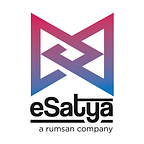To begin, what is Blockchain? For having a large scope and huge possibilities the term blockchain could mean different thing to different people. For technologists, blockchain is the driving force behind the next generation of internet. For businesses and finance, it is a distributed ledger for keeping records of all of the transactions. For developers, it is a set of protocols and encryption technologies for securely storing a data on a distributed network. For artists, it is a whole new way of distributing the art in the market. For the people of supply chain, it is all about keeping track of their product, making the process transparent while reducing unnecessary intermediaries and cost. For consumers, it is an effective means of tracing the origin and genuinity of the relative product and for others, it is a tool for radically reshaping the society and the economy taking us more into a decentralized world.
In layman’s terms, a blockchain is a decentralized network of computers that make sure that transactions are valid and immutable.
Types of Blockchain
If you have ever become curious about blockchain, chances are you might have come across these popular applications of blockchain like Bitcoin, Ethereum, Hyperledger, Litecoin and many more. All of these applications of blockchain comes with their set of advantages and disadvantages, deciding on which type of blockchain infrastructure is suited for a business depends mostly on what goal one wishes to achieve.
There are mainly three types of Blockchains:
- Public Blockchain
- Private Blockchain
- Consortium Blockchain or Federated Blockchain
1.Public blockchain or permissionless ledgers
The first type of blockchain that emerged is the public blockchain. As the name suggests, the type of blockchain is open to everyone. Without any special permission, anyone can join, access and transact in the network. Joining the network involves participating in the process that determines which block gets added to the chai. The records of transactions are transparent but anonymous.
Examples — Bitcoin, Ethereum, Dash, Lisk, Factom, Blockstream
2.Private Blockchain or permissioned ledgers
Unlike public blockchain, private blockchain only allow invited participants to join the network. These networks are controlled by either a single or series of designated network administrators, where permission to write are kept centralized to one organization, on the other hand, read permissions may be public or restricted to any degree. Typically used in the business environment, private blockchain includes database management, auditing, etc. which are internal to a single company, and so public readability may be undesirable. Private blockchains may scale better and comply better with governmental data security and privacy regulations. Thus, they have certain security advantages, and other security disadvantages A private blockchain runs the risk of security breaches just like in a centralized system.
Examples — Multichain, Blockstack, Multichain.
3.Consortium Blockchain or Federated Blockchain
Federated blockchains operate under the leadership of a group. As opposed to public blockchains, they don’t allow any person with access to the Internet to participate in the process of verifying transactions. Federated blockchains are faster (higher scalability) and provide more transaction privacy. Consortium blockchains are mostly used in the banking sector. The consensus process is controlled by a pre-selected set of nodes; for example, one might imagine a consortium of 15 financial institutions, each of which operates a node and of which 10 must sign every block in order for the block to be valid. The right to read the blockchain may be public or restricted to the participants.
Examples — R3 (Banks), EWF (Energy), B3i (Insurance), Corda
Conclusion
Private and federated/consortium blockchain networks both offer an advantage over public blockchains with regard to transaction speed. However, these networks also have their own sets of limitations, such as accountability and overall direction. What these newer types of blockchain networks offer are alternative options for rights and access management while still using the original blockchain framework.
Where openness and censorship resistance is required, public blockchains are ideal. Where privacy and some sense of control are called for, private and federated/consortium blockchains are the better options.
Sources : The Modex Team, BlockchainHub, 101 Blockchains, xsolus
